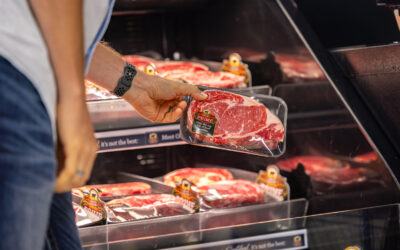
Driving Demand: Foodservice
Demand is different amid pandemic, but will build back stronger
By: Abbie Burnett
What costs most for a restaurant isn’t the meat, but an empty seat.
Chef Joshua Moore of Volare Italian Ristorante in Louisville, Ky., remembers hearing that at a Certified Angus Beef® (CAB®) field day in Texas several years ago.
It resonates even more after rounding a year of a pandemic.
Just as ranchers know the wisdom of proactive investment, Moore knows his established reputation with the brand helps to keep his business going – for now.
But before COVID-19 shutdowns and meat shortages, serving CAB was about competitive advantages and so much more.
“We know we offer the highest quality product available for operators to purchase, but that’s only where the partnership begins,” says Kelly Murray, CAB assistant director of restaurant development. “We are ‘all in’ on their business, aiming to keep them as successful as possible.”
Loyalty breeds loyalty, creating a demand not only for the product, but the company.
What is foodservice?
More than just restaurants, foodservice refers also to their supplying distributors. There are two kinds of distributors: broadliner and specialty.
Broadliners sell everything, from meat and fruit to toilet paper and cutlery. It can be a one stop shop. Specialty distributors focus on one aspect, like protein. CAB has licensed one of each type in just about every market in an effort to leave no territory ignored.
The foodservice industry represents 28% of the brand’s total sales, topping 324 million pounds last fiscal year, but down 22% from its rising trend before the pandemic.
Foodservice also leads CAB’s value-added sales (52%), although that was down for the year, too.
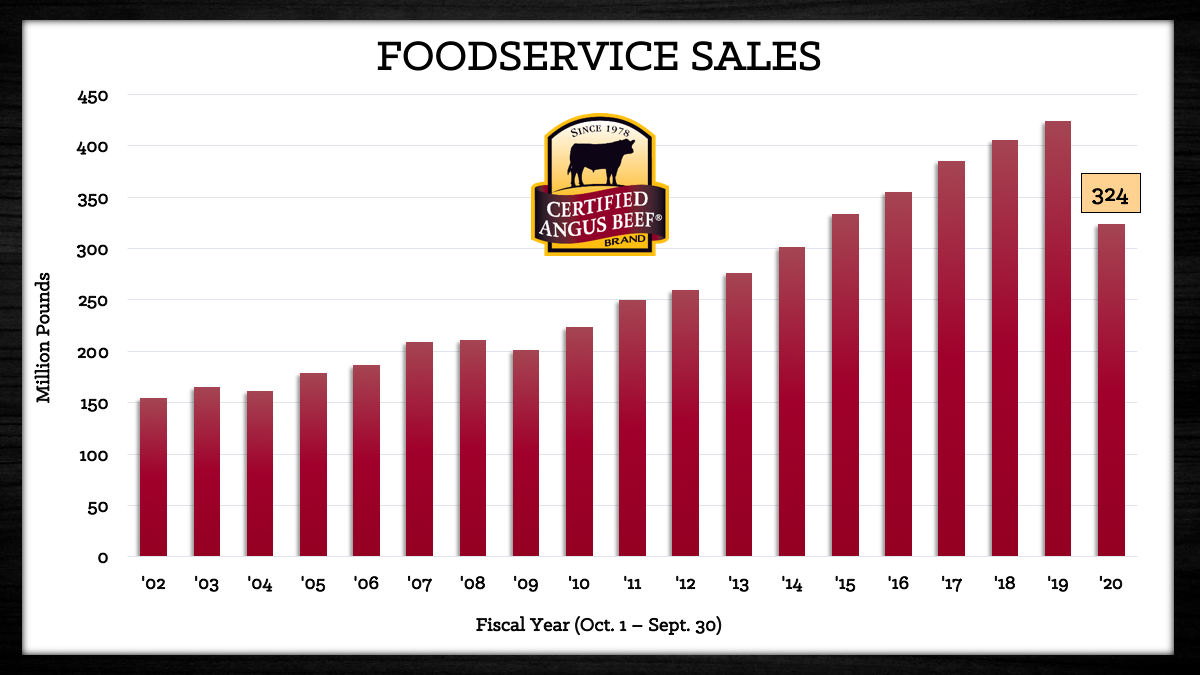
Distributors are vital to the brand because there are too many restaurants for CAB to contact individually. Equipping these sales professionals with focused training helps them vet and sell to restaurants before bringing them to the brand as potential licensees
Realizing that work goes on all the time, CAB helps distributors sell product across the board. Restaurants don’t have to be licensed to sell CAB, only to advertise that they’re selling it.
“If they’ve got a doorknob, they’re our customer,” says Josh Ennis, Certified Angus Beef specialist at Buckhead Meats Atlanta, a licensed CAB specialty distributor.
Helping his staff and those at other distributors distinguish between mere buyers and CAB loyalists takes training.
Equipping the field
Distributors acting as front lines for the brand need the right tools, especially with beef, says Sara Scott, CAB vice president of foodservice.
“Beef is an extremely intimidating item to sell,” she says. “There’s such a variety within the cuts and quality grades. When you can show them ‘Hey, if I can master beef, I can probably add a lot more to this order,’ they get pretty excited.”
Broadline distributors may offer upwards of 15,000 line items. Providing confidence in selling a complex and expensive item can set them apart in any market.
That’s where CAB steps in, providing a wealth of information and training, always growing and evolving with the times.
There are intensive, three-week courses to immerse “students” in all things beef, from ranching to cutting to sales. Live meat-science trainings and conferences are built around innovation in sales strategies, along with regular e-communications and individual touch points.
“We do a really good job of training our people to understand the brand, understand the specs and why they truly do make a big difference, and how it’s a superior product to the competitors,” Ennis says. “If everybody wants to be ‘Certified Angus Beef’ with mirror programs, well then you might as well buy the best because that’s the original.”
These resources have become even more important as the pandemic limited trips to the CAB Culinary Center in Wooster, Ohio, the usual home for hands-on training.
“Nothing attracts an audience faster than getting a raw piece of meat on the table and cutting it. And that’s even true in the video world,” Scott says.
Menus have become more fluid everywhere so knowing what to buy and when is critical.
“Before you can ever train or sell or promote an item, you’ve got to have it in stock and you’ve got to sell that guy on why it should be in stock,” she says.

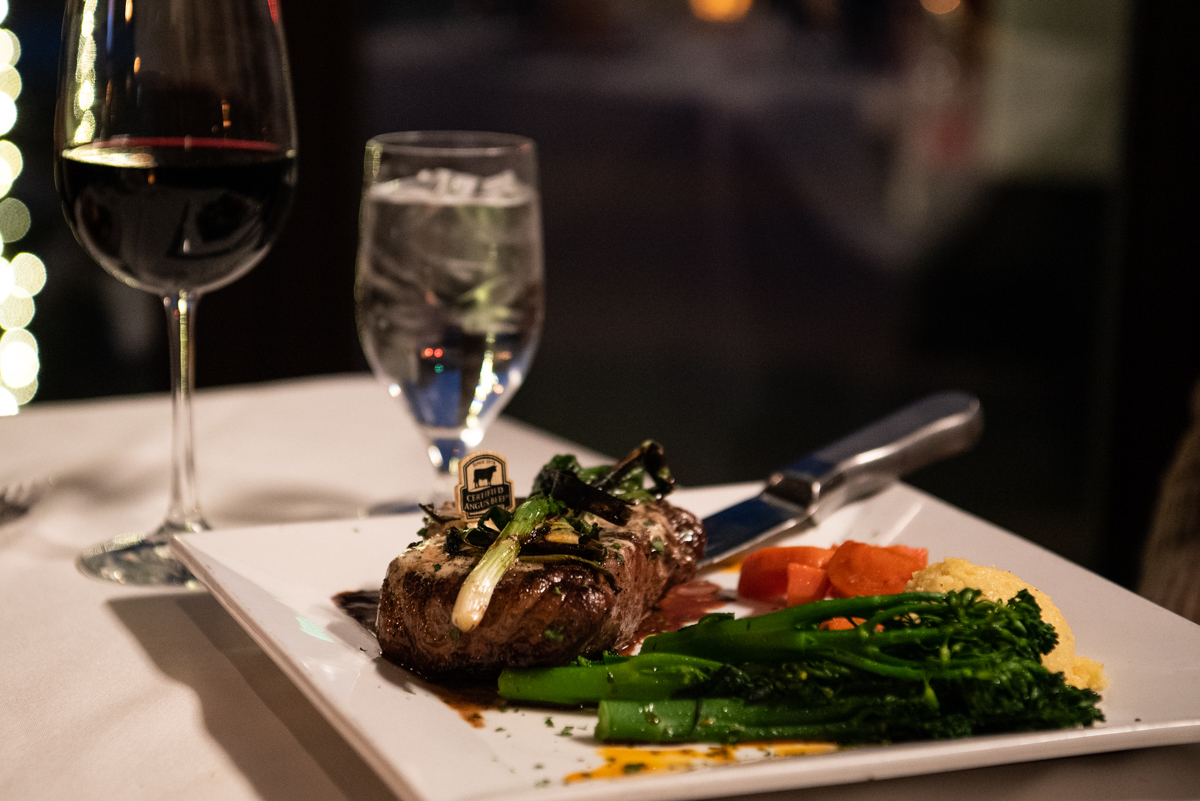

Price rarely wins
The goal is to have licensees take ownership in the brand, Scott says.
“Our job is to sell more meat. Beef is our plow horse,” distributor Ennis adds, “so we’re going to sell more Certified Angus Beef because it’s our brand. We grow our pounds based on the quality of meat that the ranchers produce, the packers cut, that we fabricate – because once all that work has been done, we’re just delivering the best end-result to our customers and then they’re putting it on the plate. At that point, taste speaks.”
Before they can get licensed with CAB, restaurants must consistently buy for 90 days.
“You can tell who’s going to be too worried about three- to five-cent price swings to stay loyal to a program that’s going to reward them in the long run,” Ennis says. “It’s just about who is the right fit, because the right fit is the customer that understands quality always wins. Price rarely wins.”
Moving pounds is good, but elevating the brand to move more pounds in the future is better.
For Scott, it comes down to this: “Will we be proud to have our logo on this menu?”
That’s hard to navigate, she says, “but it’s also a reason why CAB hasn’t been in fast-food operations. We want the brand to elevate, and we’ll walk away from pounds to not be in those establishments.”
Better to lose some sales than to lose brand equity.
“When you’re the largest branded beef company, you want to grow, but yet you don’t want to be commoditized,” Scott stresses. “From a distribution standpoint, we strive to work with the best in class in those markets, while also remaining very loyal to our distributors. That’s important to ensure that they don’t position us as a commodity, too.”
The all-in approach requires distributors, once licensed, to only offer CAB for their premium or Angus product line.
Demand through a common understanding that quality over quantity wins every time.

Pandemic troubles
“Cheeks in seats,” has long been the measure of restaurant profitability, but COVID-19 changed that metric.
Typical issues of labor and customer traffic were exacerbated by the pandemic.
In the past, Scott says it was easy for someone to quit today and find another job tomorrow. Now the challenge is having enough qualified people to do the tasks at hand.
“It involves a lot of retraining,” especially with closing and reopening, she says.
Moore at Volare Italian Ristorante had to furlough 50 people during the first shutdown in Kentucky, rehire some and then let another 50 go during the second shutdown before the holidays. Still, the business goes on.
“We’ve been in business for 17 years and have a very loyal customer base,” he says. “A lot of restaurants don’t have that or they’re newer so they’re still getting established or don’t have a large space. They’re trying to go from maybe a 60-, 75-seat restaurant to half, so it’s hard to even keep your staff on at that point.”
Seeing all of that taking shape, CAB started converting in-person training to digital. Ideation for menu items from one beef cut went on to creating “reopening kits” and “take-out, how-to” guides.
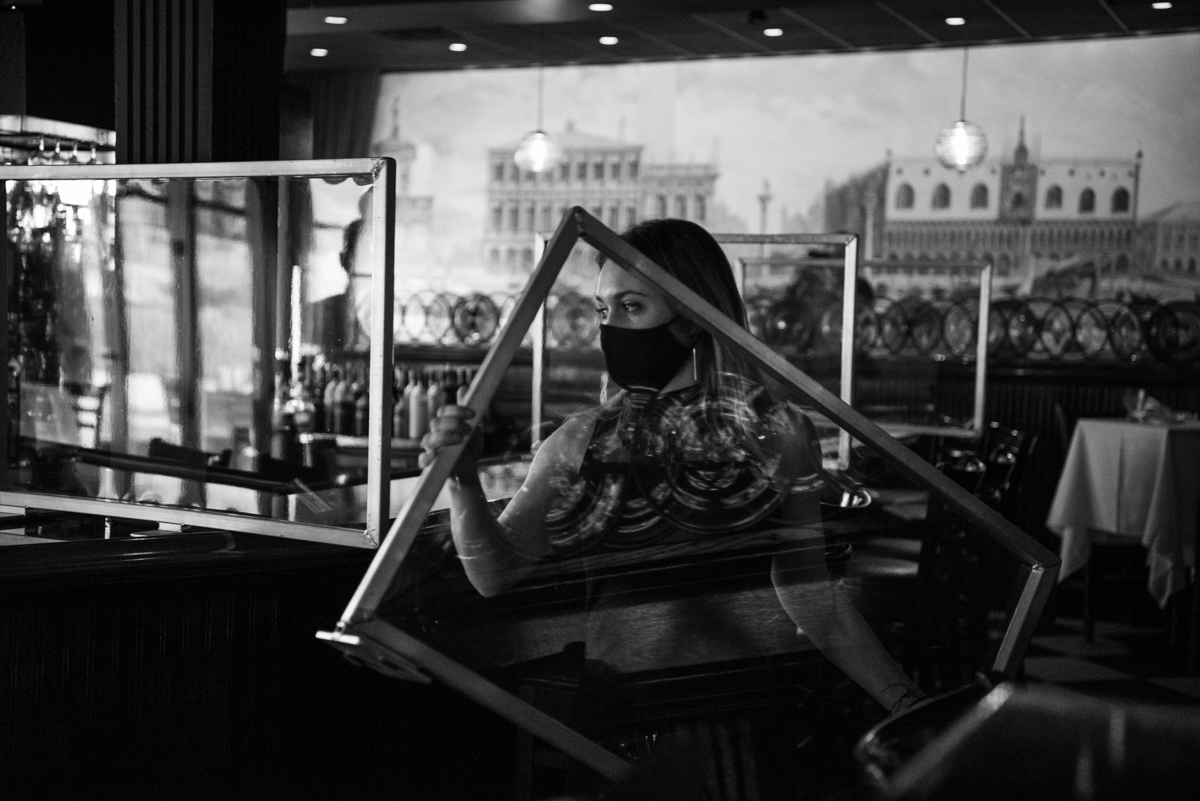
“We’ve dug in deeper,” Murray says. “We said, ‘How can we help support our current base of restaurant operators, and then how can we go out there and get new champions of the brand?’ We’re not sitting around, that’s for darn sure. The whole goal is to drive tonnage, to drive pounds, with great partners. So we’re still doing it, just differently.”
That doesn’t make it easy to watch the industry struggle.
“I honestly have to put blinders up,” she says. “I can only be forward-thinking, or it’s a depressing place to sit. You just gotta stay positive and keep looking forward, controlling what you can control.”
Murray says her team is closer to the restaurant operator than ever, anticipating their needs. Last year saw the world’s foodservice sales force reduced, creating a space for CAB to develop relationships with multi-concept restaurant groups and chains. “Those are both brand-elevating and volume-drivers.”
For Ennis, each sale is hope.
Pain in the beef chain
“If you want to know what restaurants do to drive demand, you only have to look at what tenderloin prices did this past November and December,” says Sara Scott, CAB director of foodservice.
Ribeyes were more expensive than tenderloins. That never happens.
Middle meat demand declined as supplies of high-quality beef reached all-time highs, with record grading and carcass weights this past year.
“It’s because of the strain being put on restaurants right now. That’s pretty black and white indicator of what restaurants drive. They drive tenderloin business,” she says.
It’s why whole supply chain from farm to plate is extraordinarily important. When one part struggles, everyone else feels it too.
“We all look at it as if we sell one more box of strips, we sell one more box of sirloin, that could be the difference of somebody keeping their job,” he says. “Maybe it’s me or maybe someone in our cut shop. But if you look at it that way, then I think you’re more inclined to work a little harder, make that one more stop, that one more phone call.”
Driving demand in this trying time is larger than selling beef. It’s about helping partners where they’re at in this moment.
That’s why at the end of January, the brand launched #RestaurantChallenge, encouraging everyone to support their local establishments.
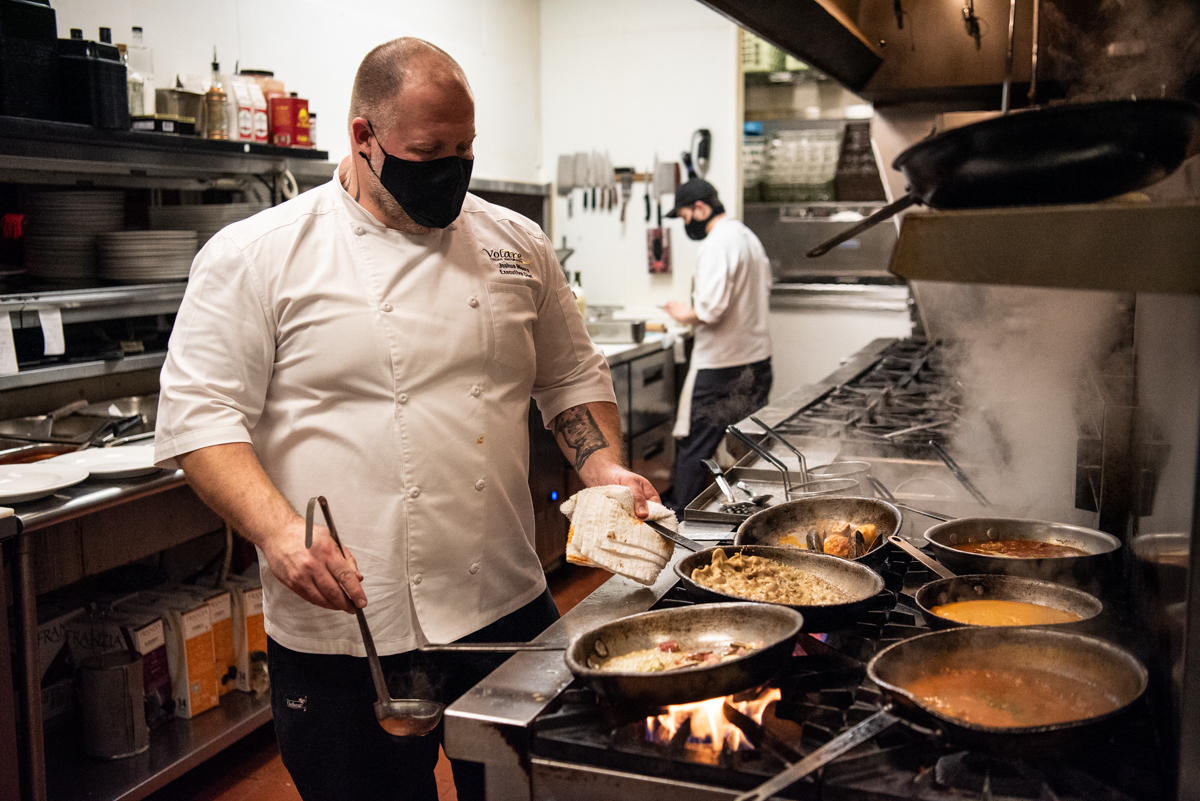
Some things never change
Pandemic or not, steak is for celebration.
“The demand is not going to diminish,” Murray says. “Yes, restaurants are struggling right now, but we also know that when they come back—and they will be back—they’re still going to want high-quality product. They’ll have to set themselves apart to be able to come back and thrive again. The consumer knows more about beef than ever before, and their expectations are higher – especially if they’re going to go out and spend the money.”
The chefs and salespeople are resilient, too, Scott says.
“There’s going to be a percentage that are just working a job. But it’s a pretty low percentage, because it’s people that are fueled by the love of the food industry.”
Moore lives for the rush.
“I love the feel of Friday and Saturday nights, when you’re in the weeds, and the tickets are hanging and you can’t see the end in sight. You fight your way through and put out great food,” he says. “At the end of it, you walk around the dining room and people are happy, smiling and enjoying their meal.”
If the empty seat is a threat, a full dining room is its antidote.
You May Also Like…
Cutout and Quality Strong
Summer weather has begun to set in with more regions of the country set to experience hotter temperatures. This means the traditional turning of consumer focus toward hamburgers and hot dogs rather than steaks, the spring favorite.
CAB Sets Sales Records, Sees Historically High Brand Acceptance Rates
In an otherwise tough time in the beef business, sales and supply records have been a bright spot. The positive numbers mean that quality beef production has not let up, and beef demand is holding. Consumers have proven the value proposition: the good stuff is worth a little more money, for a better eating experience.
Feeding Quality Forum Dates Set Earlier in August
When you’re feeding cattle, it counts to keep track of every calf, pound and dollar. Beyond the event’s educational sessions, networking between segments of the beef supply chain is invaluable—from feeders and cow-calf operators to allied industry and university researchers.


